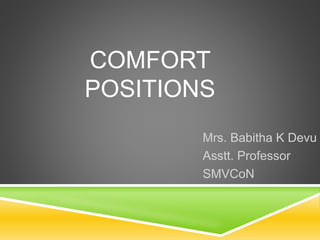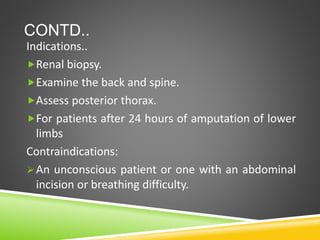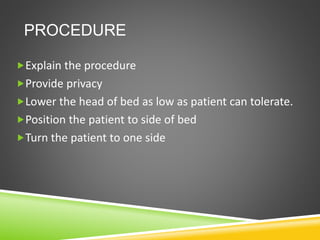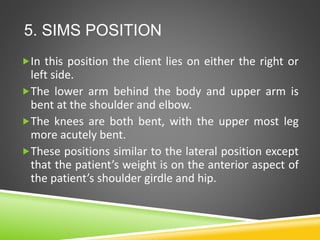1. Positioning patients properly is important for comfort, medical procedures, and preventing complications. It involves assessing the patient's needs and positioning them in alignments that promote circulation, relieve pressure, and allow for interventions.
2. Common positions discussed include supine, prone, lateral, lithotomy, Fowler's position, and Trendelenburg. Each position has specific indications and procedures to ensure patient safety and access for medical needs.
3. Special considerations are needed for obese patients to support their weight and prevent impaired circulation or breathing from positioning. Thorough documentation of assessments and interventions is also important.




































































